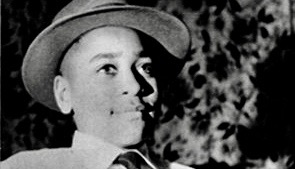By Stacy M. Brown
NNPA Senior National
Correspondent
Newly unearthed research notes and letters from William Bradford Huie, the journalist whose reporting on the 1955 lynching of Emmett Till helped shape the public’s understanding of the crime, reveal that Huie deliberately concealed vital details that could have implicated additional participants in the murder.
These documents, recently released by the descendants of one of the lawyers involved in the case, suggest that Huie prioritized his financial interests and the protection of his sources over the pursuit of truth and justice.
The cache of documents, now housed in the Florida State University Digital Repository, includes a 33-page set of Huie’s research notes and a series of letters exchanged between Huie and John Whitten, one of the defense attorneys for J.W. Milam and Roy Bryant, the two men acquitted of Till’s murder. The content of these letters and notes reveals a complex and troubling relationship between the journalist and the defense team, raising serious questions about the integrity of Huie’s reporting.

Huie’s notes indicate that he was aware of other individuals involved in the kidnapping and murder of Emmett Till but chose not to report this information.
In a letter dated December 10, 1955, Huie confessed his doubts about the story Milam and Bryant were telling him: “I began doubting myself… and one night I was on the point of coming back to Mississippi and ‘pistol-whipping’ Milam for telling me a fabric of lies.”
Despite these doubts, Huie went ahead with his article in Look magazine, presenting Milam and Bryant’s version of events as the complete truth.
The letters between Huie and Whitten also reveal the extent to which Huie was willing to collaborate with the defense attorneys to craft a narrative that would serve their mutual interests.
In a letter dated November 16, 1955, Huie assured Whitten that he was carefully considering the “most effective presentation” of the story, stating, “We have been sort of marking time… and in due time and with great care, I’ll be in touch with you.” This close coordination suggests that Huie’s reporting was influenced not only by his desire to protect his sources but also by a shared goal of controlling how the public would receive the story.
Huie’s financial motivations are laid bare in another letter from Whitten, dated November 22, 1955, in which the attorney thanked Huie for a gift—a fine Cavanaugh hat—and expressed confidence that the criminal case would not proceed further despite any additional publicity.
“My wife was so complimentary of the hat… that I finally had to tell her something about where it came from,” Whitten wrote, before adding, “Nevertheless, I think that we should not throw caution to the winds.”




